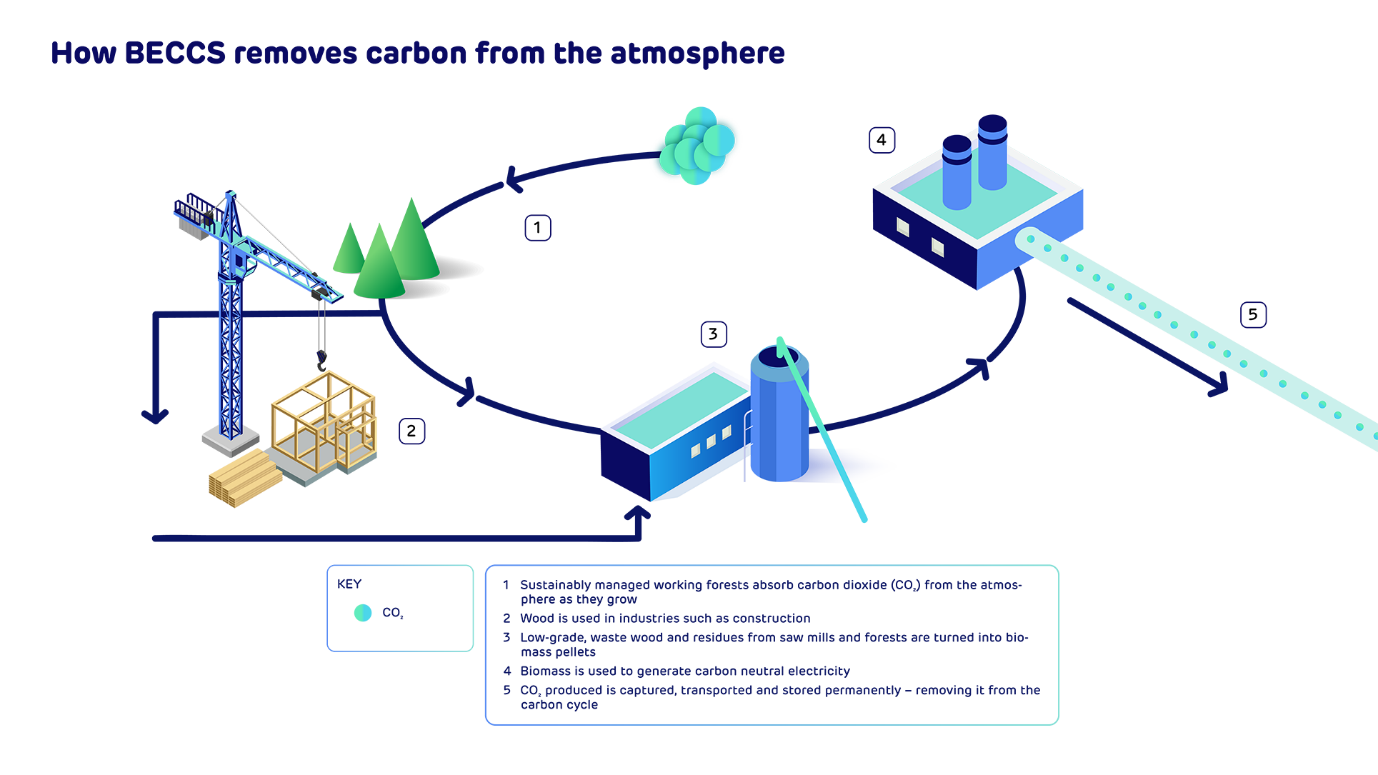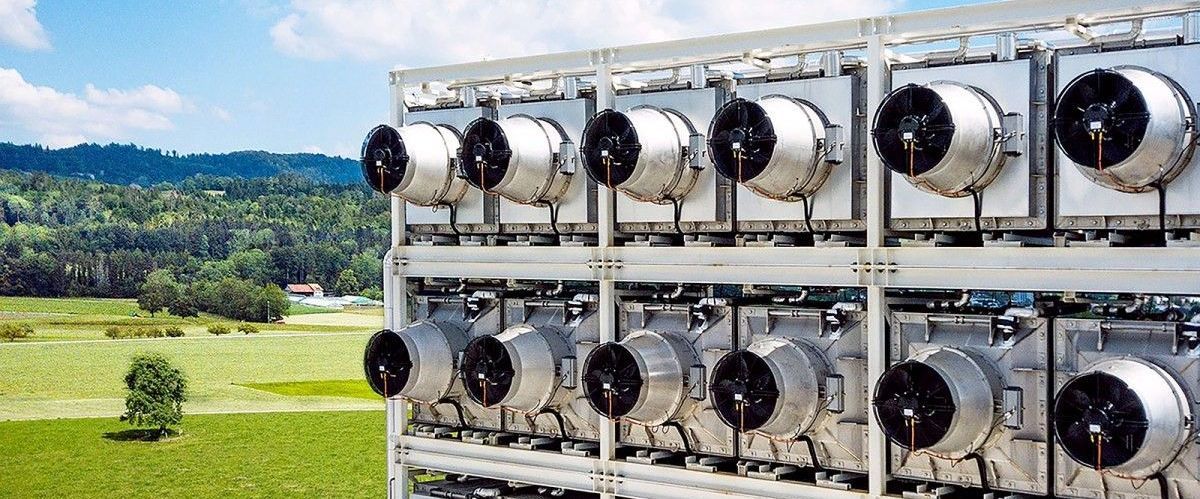Carbon Removal Strategies to Consider
What are the best Carbon Removal Methods?
An Exploration of BECCS and DACCS as Carbon Removal Strategies
Article by Imy Allibhai, Graduate Sustainability Consultant at Optimised, who shares insight into various carbon removal strategies.
Why is carbon removal important?
The Need for Carbon Removal
Rising global carbon dioxide levels have led to a plethora of environmental and societal problems, such as extreme weather events, rising sea levels and biodiversity loss. Businesses are committing to decreasing their greenhouse gas (GHG) emissions in alignment with limiting the global temperature rise to 1.5°C above pre-industrial levels, while others are striving towards carbon neutrality by offsetting their emissions. Although efforts to reduce carbon emissions remain paramount, the magnitude of existing carbon in the atmosphere necessitates approaches like carbon removal. These projects can function as a vital bridge, facilitating the transition towards net zero and supporting the achievement of vital climate goals and targets.
How can sustainable biomass deliver negative emissions?
Bioenergy with Carbon Capture and Storage (BECCS)
The BECCS approach uses a technology that combines the use of biomass for energy production with carbon capture and storage, offering a dual solution to emissions reduction. Organic materials known as biomass feedstocks, including energy crops, agricultural residues, and even municipal waste, are burned to generate energy, while the resulting carbon dioxide is captured. The carbon dioxide is stored in geological formations deep underground, such as depleted oil and gas reservoirs or saline aquifers. BECCS not only removes carbon dioxide from the atmosphere, resulting in negative emissions, but also generates renewable energy from the biomass. However, challenges often arise from ensuring ethical sourcing of biomass, to limiting negative impacts on the environment, such as deforestation.

What is direct air carbon capture and storage?
Direct Air Carbon Capture and Storage (DACCS)
DACCS, on the other hand, takes a direct approach to carbon removal by capturing carbon dioxide directly from ambient air in the atmosphere rather than from a specific source.
DACCS technology utilises specialised equipment that employs absorbent materials such as chemicals and solvents, to directly capture carbon dioxide from the air. These materials are processed to separate the carbon dioxide, which is subsequently compressed and stored underground in geological formations, similar to BECCS. DACCS, however is an energy intensive process, which can limit the benefits of its net emissions reduction.

What is the difference between BECCS and DACCS?
A Comparative Analysis: BECCS vs. DACCS
When comparing BECCS and DACCS, it is clear that both technologies offer unique benefits. BECCS leverages existing biomass resources, contributing to rural economies and sustainable land use. Meanwhile, DACCS has the advantage of being location-independent and can be deployed in regions with limited biomass availability. An integrated approach that combines the strengths of both technologies can yield a more comprehensive and robust carbon removal strategy.
How can we responsibly deploy BECCS and DACCS?
Environmental and Social Considerations
The environmental and social implications of BECCS and DACCS projects are of paramount importance. Ethical biomass sourcing, sustainable land-use planning, and community engagement are crucial to ensure that these technologies responsibly deliver positive outcomes without causing harm. Striking a balance between carbon removal and the preservation of ecosystems and communities is key to their responsible deployment.
How can this contribute towards net zero?
The Role of Carbon Removal in the Transition to Net Zero
Carbon removal projects play a pivotal role in the broader climate strategy, working in tandem with carbon emissions reduction and renewable energy adoption. It’s vital to note that carbon removals, particularly through methods like BECCS and DACCS, are necessary to reach net zero status. However, while essential, these methods are significantly more expensive than other offset projects and are not readily available in the current market.
Nevertheless, the significance of BECCS and DACCS cannot be overstated; they represent higher-quality projects compared to other offsets, providing a direct and effective approach to carbon removal. These technologies provide a tangible pathway towards achieving climate goals and safeguarding our planet for future generations. By raising awareness, garnering support, and investing in their development and implementation, we can harness the power of carbon removal alongside emissions reduction and renewable energy adoption. In embracing a comprehensive and integrated approach, we stand a better chance of mitigating the dire effects of climate change.
For expert guidance in planning and implementing carbon reduction and net zero strategies, visit our Net Zero Advisory page.
BOOK YOUR 30-MINUTE ENERGY MANAGEMENT CONSULTATION
Fill in your details below to arrange a complimentary consultation with one of our experts. They will give you bespoke advice to help your business achieve all its energy needs, reducing cost, consumption and carbon.










